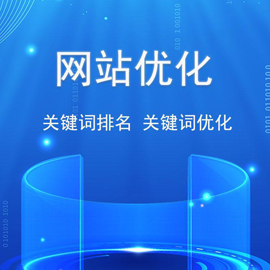如何在Android中利用AsyncTask對任務進行異步處理
本篇文章給大家分享的是有關如何在Android中利用 AsyncTask對任務進行異步處理,小編覺得挺實用的,因此分享給大家學習,希望大家閱讀完這篇文章后可以有所收獲,話不多說,跟著小編一起來看看吧。

成都網站設計、成都做網站介紹好的網站是理念、設計和技術的結合。創新互聯建站擁有的網站設計理念、多方位的設計風格、經驗豐富的設計團隊。提供PC端+手機端網站建設,用營銷思維進行網站設計、采用先進技術開源代碼、注重用戶體驗與SEO基礎,將技術與創意整合到網站之中,以契合客戶的方式做到創意性的視覺化效果。
Android AsyncTask實現異步處理任務的方法詳解
在開發Android應用時必須遵守單線程模型的原則:Android UI操作并不是線程安全的并且這些操作必須在UI線程中執行。
在單線程模型中始終要記住兩條法則:
不要阻塞UI線程
確保只在UI線程中訪問Android UI工具包
當一個程序第一次啟動時,Android會同時啟動一個對應的主線程(Main Thread),主線程主要負責處理與UI相關的事件,如:用戶的按鍵事件,用戶接觸屏幕的事件以及屏幕繪圖事件,并把相關的事件分發到對應的組件進行處理。所以主線程通常又被叫做UI線程。
比如說從網上獲取一個網頁,在一個TextView中將其源代碼顯示出來,這種涉及到網絡操作的程序一般都是需要開一個線程完成網絡訪問,但是在獲得頁面源碼后,是不能直接在網絡操作線程中調用TextView.setText()的.因為其他線程中是不能直接訪問主UI線程成員
Android提供了幾種在其他線程中訪問UI線程的方法。
Activity.runOnUiThread( Runnable ) View.post( Runnable ) View.postDelayed( Runnable, long ) Hanlder
這些類或方法同樣會使你的代碼很復雜很難理解。然而當你需要實現一些很復雜的操作并需要頻繁地更新UI時這會變得更糟糕。
為了解決這個問題,Android 1.5提供了一個工具類:AsyncTask,它使創建需要與用戶界面交互的長時間運行的任務變得更簡單。不需要借助線程和Handler即可實現。
AsyncTask是抽象類.AsyncTask定義了三種泛型類型 Params,Progress和Result。
◆Params 啟動任務執行的輸入參數,比如HTTP請求的URL。
◆Progress 后臺任務執行的百分比。
◆Result 后臺執行任務最終返回的結果,比如String。
AsyncTask的執行分為四個步驟,每一步都對應一個回調方法,這些方法不應該由應用程序調用,開發者需要做的就是實現這些方法。
子類化AsyncTask
實現AsyncTask中定義的下面一個或幾個方法
onPreExecute(),該方法將在執行實際的后臺操作前被UI thread調用。可以在該方法中做一些準備工作,如在界面上顯示一個進度條。
doInBackground(Params...),將在onPreExecute 方法執行后馬上執行,該方法運行在后臺線程中。這里將主要負責執行那些很耗時的后臺計算工作。可以調用 publishProgress方法來更新實時的任務進度。該方法是抽象方法,子類必須實現。
onProgressUpdate(Progress...),在publishProgress方法被調用后,UI thread將調用這個方法從而在界面上展示任務的進展情況,例如通過一個進度條進行展示。
onPostExecute(Result),在doInBackground 執行完成后,onPostExecute 方法將被UI thread調用,后臺的計算結果將通過該方法傳遞到UI thread.
為了正確的使用AsyncTask類,以下是幾條必須遵守的準則:
1) Task的實例必須在UI thread中創建
2) execute方法必須在UI thread中調用
3) 不要手動的調用onPreExecute(), onPostExecute(Result),doInBackground(Params...), onProgressUpdate(Progress...)這幾個方法
4) 該task只能被執行一次,否則多次調用時將會出現異常
從網上獲取一個網頁,在一個TextView中將其源代碼顯示出來
package test.list;
import java.io.ByteArrayOutputStream;
import java.io.InputStream;
import java.util.ArrayList;
import org.apache.http.HttpEntity;
import org.apache.http.HttpResponse;
import org.apache.http.client.HttpClient;
import org.apache.http.client.methods.HttpGet;
import org.apache.http.impl.client.DefaultHttpClient;
import android.app.Activity;
import android.app.ProgressDialog;
import android.content.Context;
import android.content.DialogInterface;
import android.os.AsyncTask;
import android.os.Bundle;
import android.os.Handler;
import android.os.Message;
import android.view.View;
import android.widget.Button;
import android.widget.EditText;
import android.widget.TextView;
public class NetworkActivity extends Activity{
private TextView message;
private Button open;
private EditText url;
@Override
public void onCreate(Bundle savedInstanceState) {
super.onCreate(savedInstanceState);
setContentView(R.layout.network);
message= (TextView) findViewById(R.id.message);
url= (EditText) findViewById(R.id.url);
open= (Button) findViewById(R.id.open);
open.setOnClickListener(new View.OnClickListener() {
public void onClick(View arg0) {
connect();
}
});
}
private void connect() {
PageTask task = new PageTask(this);
task.execute(url.getText().toString());
}
class PageTask extends AsyncTask<String, Integer, String> {
// 可變長的輸入參數,與AsyncTask.exucute()對應
ProgressDialog pdialog;
public PageTask(Context context){
pdialog = new ProgressDialog(context, 0);
pdialog.setButton("cancel", new DialogInterface.OnClickListener() {
public void onClick(DialogInterface dialog, int i) {
dialog.cancel();
}
});
pdialog.setOnCancelListener(new DialogInterface.OnCancelListener() {
public void onCancel(DialogInterface dialog) {
finish();
}
});
pdialog.setCancelable(true);
pdialog.setMax(100);
pdialog.setProgressStyle(ProgressDialog.STYLE_HORIZONTAL);
pdialog.show();
}
@Override
protected String doInBackground(String... params) {
try{
HttpClient client = new DefaultHttpClient();
// params[0]代表連接的url
HttpGet get = new HttpGet(params[0]);
HttpResponse response = client.execute(get);
HttpEntity entity = response.getEntity();
long length = entity.getContentLength();
InputStream is = entity.getContent();
String s = null;
if(is != null) {
ByteArrayOutputStream baos = new ByteArrayOutputStream();
byte[] buf = new byte[128];
int ch = -1;
int count = 0;
while((ch = is.read(buf)) != -1) {
baos.write(buf, 0, ch);
count += ch;
if(length > 0) {
// 如果知道響應的長度,調用publishProgress()更新進度
publishProgress((int) ((count / (float) length) * 100));
}
// 讓線程休眠100ms
Thread.sleep(100);
}
s = new String(baos.toByteArray()); }
// 返回結果
return s;
} catch(Exception e) {
e.printStackTrace();
}
return null;
}
@Override
protected void onCancelled() {
super.onCancelled();
}
@Override
protected void onPostExecute(String result) {
// 返回HTML頁面的內容
message.setText(result);
pdialog.dismiss();
}
@Override
protected void onPreExecute() {
// 任務啟動,可以在這里顯示一個對話框,這里簡單處理
message.setText(R.string.task_started);
}
@Override
protected void onProgressUpdate(Integer... values) {
// 更新進度
System.out.println(""+values[0]);
message.setText(""+values[0]);
pdialog.setProgress(values[0]);
}
}
}
以上就是如何在Android中利用 AsyncTask對任務進行異步處理,小編相信有部分知識點可能是我們日常工作會見到或用到的。希望你能通過這篇文章學到更多知識。更多詳情敬請關注創新互聯行業資訊頻道。
文章標題:如何在Android中利用AsyncTask對任務進行異步處理
文章源于:http://newbst.com/article36/gpjgsg.html
成都網站建設公司_創新互聯,為您提供虛擬主機、靜態網站、網站排名、搜索引擎優化、品牌網站設計、建站公司
聲明:本網站發布的內容(圖片、視頻和文字)以用戶投稿、用戶轉載內容為主,如果涉及侵權請盡快告知,我們將會在第一時間刪除。文章觀點不代表本網站立場,如需處理請聯系客服。電話:028-86922220;郵箱:631063699@qq.com。內容未經允許不得轉載,或轉載時需注明來源: 創新互聯

- 高端營銷型網站建設的基本流程是什么 2016-10-07
- 營銷型網站建設及優勢分析 2022-07-07
- 湖南瀏陽煙花營銷型網站建設公司哪家好 2022-08-06
- 做營銷型網站建設必須要有的步驟是什么? 2022-12-28
- 營銷型網站建設常見問題 2022-06-28
- 營銷型網站建設有什么特點 2023-01-28
- 什么樣的營銷型網站建設能快速為企業帶來利潤 2021-11-02
- 企業營銷型網站建設之初應該考慮到哪些內容 2016-10-21
- 營銷型網站建設和普通網站制作的區別在哪里? 2023-03-08
- 天津做網站之營銷型網站建設如何來提升品質 2023-03-12
- 營銷型網站建設小課堂:想做好要先了解這七個方面 2016-08-18
- 創新互聯:全網營銷型網站建設的三大目標 2022-11-26